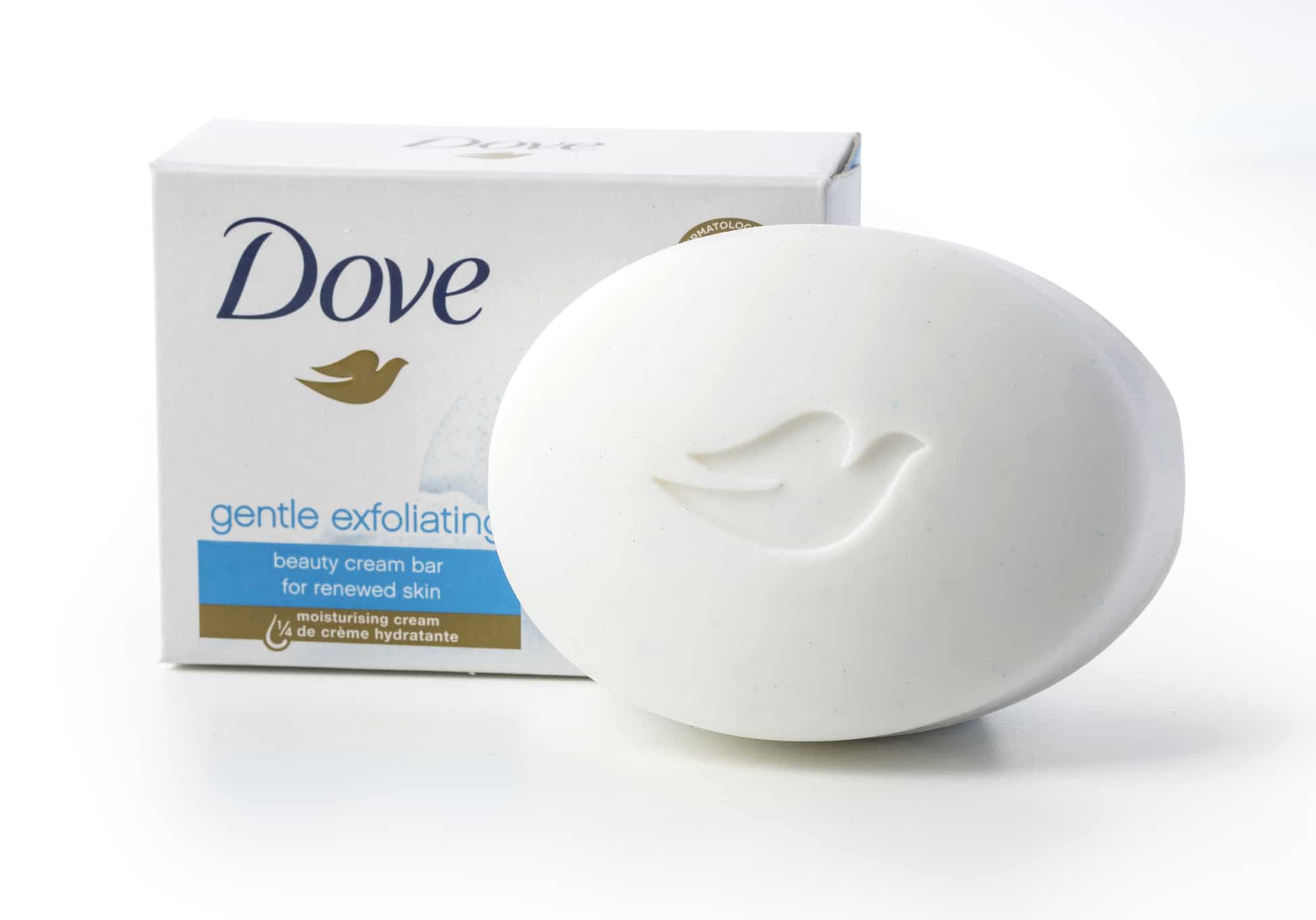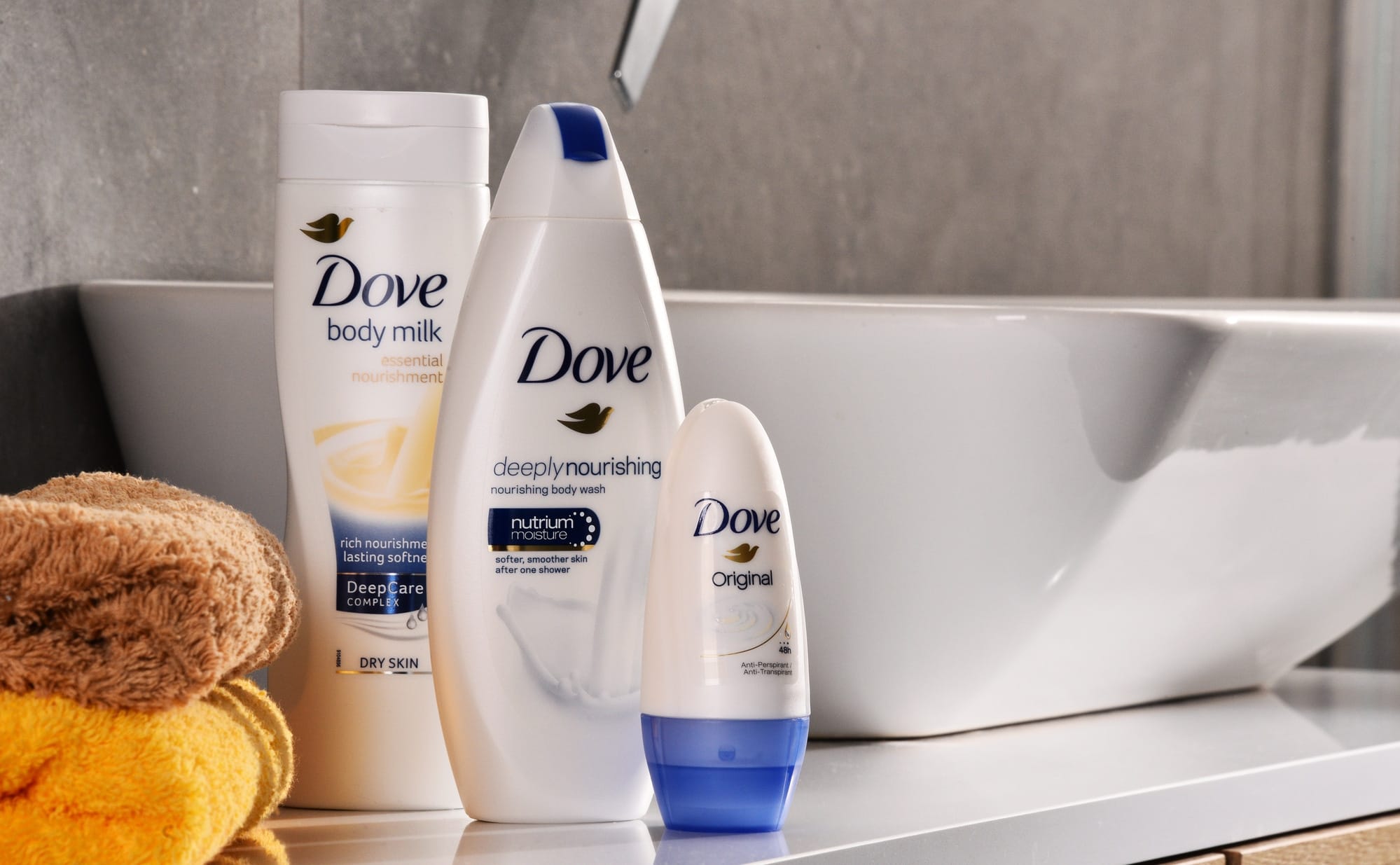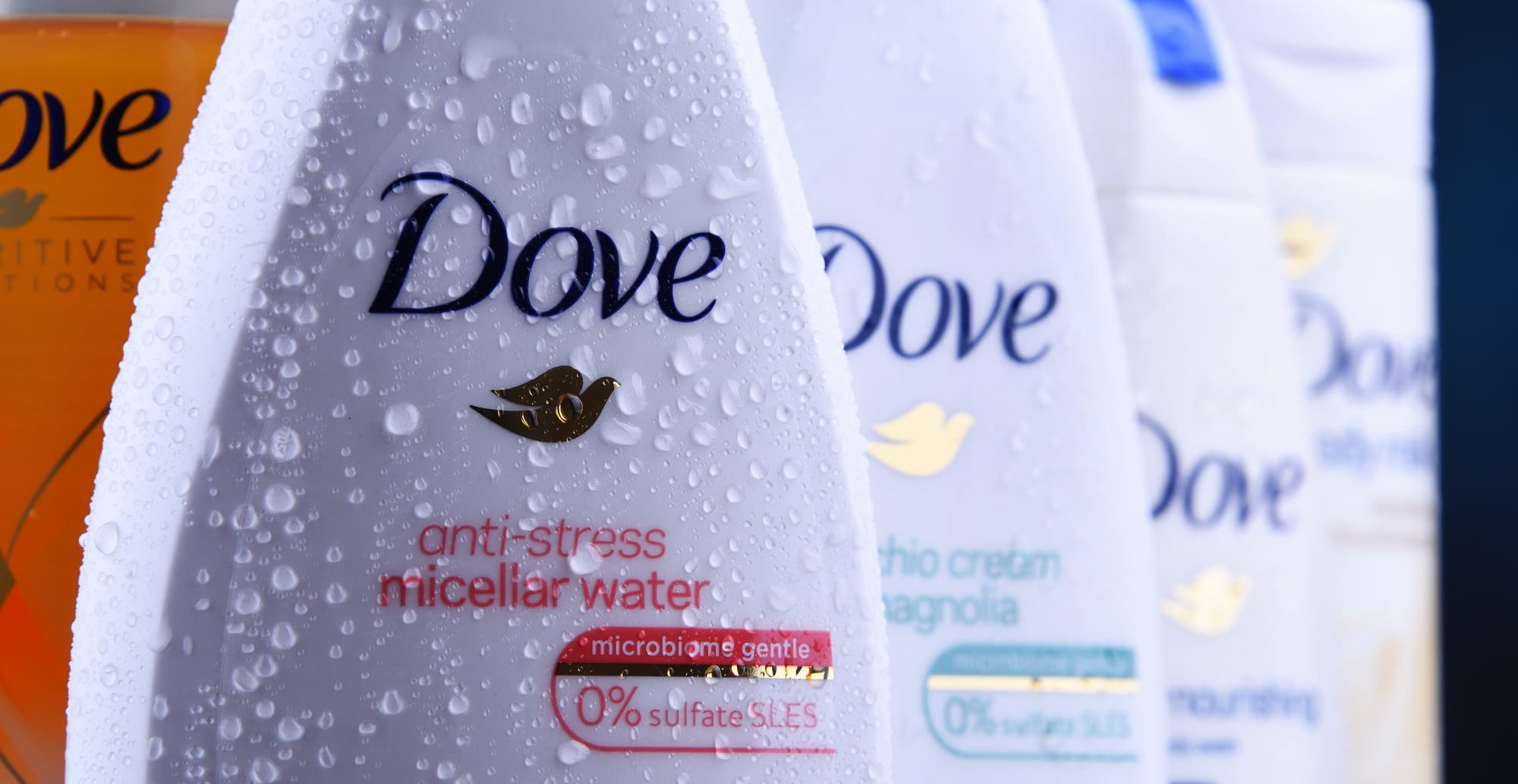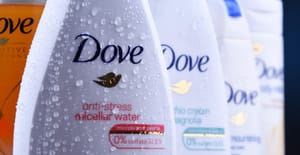Our Dove SWOT analysis investigates the Strengths, Weaknesses, Opportunities, and external Threats that the hair and skin care company is facing.
If I ask you to make a list of the soaps that are considered best for the skin, I am sure your list will include the name of Dove soap.
Although a lot of soaps exist in the market, no soap can match the smoothness and softness Dove provides to the skin. Undoubtedly, Dove was established as a soap brand and gained all the popularity as a soap. But later, it introduced skincare, hair, facial, and body products.
Similar to its soap, all the other products also became famous due to their superior quality. However, Dove shampoo became famous since it helped people prevent hair fall and improved the health of many people's hair.
Other than its shampoo, Dove's skin care products also became famous since they would make the skin really soft and smooth. Since we are all familiar with Dove and use its products in our daily routine, we decided to carry out a Dove SWOT analysis.
However, before we proceed further, we first have to gain some understanding of the brand itself. To do that, let's have a look at the history of Dove. The Dove brand is owned by one of the biggest FMCG companies, Unilever.
Dove was established in 1957 as a soap manufacturing brand. At that time, Dove hit the market hard since it was the only soap that didn't make the skin dry and acted as a moisturizer. People loved the soap. As a result, it got famous in no time.
Besides focusing on the quality of its product, Dove also paid attention to its marketing. For example, back in the 50s, when TV advertisements were new, Dove used this medium to advertise its soaps.
It showed milk pouring into the soap bar, which made people believe the moisturizing effect it would give. This attracted people to buy the soap, and as a result, the sales of Dove went up.
As the sales of Dove increased in the 1960s, Dove expanded its operation internationally. Later in the 20th century, Dove introduced skin care products such as moisturizers to cater to problems arising from dry skin.
After skin care products became famous among consumers in the 1980s, Dove developed specialized hair products such as shampoos and oil that healed damaged hair and made hair healthy.
By the 1990s, Dove was selling various products such as deodorants, shampoos, and cleansers. Moreover, the brand has expanded its operations to 80 countries.
Over the years, Dove worked excessively to promote women's rights. In the early 2000s, Dove launched a campaign that made women realize that all types of bodies are beautiful. This campaign really helped in boosting the confidence of women. As a result, the brand received admiration from a lot of women all over the globe.
As the years passed by, Dove increased its product portfolio. From making soaps only in the 1950s, it is now making 100 products for personal use. Currently, around 60 million people use Dove products in 139 countries. However, the number of Dove users is expected to increase to 250 million by 2030.
Such a wide customer base helps Dove to generate huge sums of revenue. In 2022, Dove generated revenue of $8.35 billion. Besides generating huge profits, Dove also plays a significant role in providing employment across the globe. In addition, Dove's large workforce of 148,000 helps the brand ensure the smooth flow of its business.
Now that we are done discussing Dove's history and current operations, let's proceed further and discuss what SWOT analysis is. SWOT analysis is a tool businesses use to analyze what internal and external factors impact the operations of a business.
A SWOT template highlights an organization's strengths, weaknesses, opportunities, and threats. Now that you guys know the significance and purpose of conducting the SWOT analysis, let's move ahead and conduct a Dove SWOT analysis.

Strengths of Dove
Strengths are the factors that provide a competitive advantage to any organization. Every organization possesses some strengths that help it to survive in the market. In this section, we will look at Dove's strengths.
Huge Customer Base
A large customer base is very beneficial for any brand because it helps the brand increase huge sums of revenue. If we look at Dove, it has a large customer base. People all over the globe use its products. There are 60 million people who are currently using products made by Dove.
Such a huge customer base helps the brand generate high revenue and profits. Moreover, having a large customer base consolidates the brand's position in the market. It provides a sense of security to the brand.
International Presence
Every domestic brand aims to spread its operations internationally to increase its customer base and revenue. However, operating internationally requires enough capital for every brand doesn't have.
Dove is one of the brands that started its operations in the US. However, only after a few years Dove started operating internationally. This increased the customer base of Dove, and as a result, Dove made huge profits. Currently, Dove operates in 139 countries all over the globe. All these countries contribute to Dove's revenue.
Against Animal Testing
Many brands that produce products for personal use are indulged in animal testing. However, Dove is one of the brands that strictly opposes animal testing and causes harm to animals in manufacturing.
Dove considers testing of products on animals unethical; this is why since the mid-1980s, Dove has not tested its products on animals. This characteristic of Dove provides it a competitive edge and draws more customers to the brand.

Weaknesses of Dove
Weaknesses are the factors that hinder the growth of any organization. It holds back the organization from maximizing profits. Organizations need to work on their weaknesses to grow and maximize their market share. Let's have a look at what weaknesses Dove possesses.
Limited Product Diversity
Dove is a personal care brand that primarily produces a range of products for cleansing and moisturizing the skin and hair.
These products include soap, body wash, shampoo, conditioner, and deodorant. While Dove offers a range of products within these categories, it does not have a particularly diverse product line compared to other brands.
For example, Nivea offers a wider range of products such as makeup, fragrances, and skincare products such as facial cleansers, toners, and serums. As a result, Dove may not be the best choice for consumers looking for a brand that offers a wide variety of personal care and beauty products.
In comparison, Dove primarily focuses on producing a limited range of products that are primarily targeted at cleansing and moisturizing the skin and hair.
Products Have Potential For Causing Irritation
Brands that manufacture personal products often use different chemicals and fragrances in their products. As a result, their products often cause irritation on users' skin.
People have experienced irritation and other adverse reactions to Dove products due to their ingredients or fragrances. While Dove products are formulated with gentle and nourishing ingredients such as moisturizing cream and glycerin, some people have still been sensitive to certain ingredients or fragrances.
There are 17 ingredients in Dove's extra-sensitive soap that may exhibit adverse effects on users with sensitive skin. This affects the brand's reputation and may cause customers to stop buying Dove's products.
Mainly Focuses On Female Products
Dove is a personal care brand that primarily targets the female segment with its products. While Dove does offer some products specifically for men, such as deodorant and body wash, the brand's primary focus is on producing products for women.
As a result, the range of products that Dove offers for men is relatively limited compared to the range of products it offers for women. Unfortunately, this means that men looking for a wide variety of personal care products may not find what they want with Dove.

Opportunities For Dove
Every organization is provided with opportunities to grow. This section in the SWOT analysis refers to the external factors that present an organization's potential for growth or advantage. So let's proceed and look at what opportunities Dove has to grow.
Launching A New Product Line
One opportunity that Dove has is launching new products or product lines that meet the needs of a specific market segment's needs or fill a market gap. This could involve introducing new products or product lines that address a particular consumer's specific needs or preferences.
For example, Dove could consider developing a range of skincare products or hair care products specifically for men since Dove primarily focuses on producing such products for women.
Increasing Living Standard
The growing income of consumers presents an opportunity for Dove to expand its target market. As the global income of consumers increases, they are more willing and able to spend more on personal care products.
Dove may have been considered too expensive for some consumers in the past. However, as incomes rose, people became more aware of the importance of good skincare. This is why people are now more willing to spend more on a high-quality product like Dove.
Mergers and Acquisitions
As a personal care brand, Dove has an opportunity to form mergers and acquire other companies to increase its market share. For example, Dove could expand its product line, enter new markets, or access new technologies or resources by acquiring other companies.
For example, Dove could consider acquiring a company that specializes in perfumes, hair, or makeup, which would allow Dove to diversify its product offerings and appeal to a wider range of consumers.
Threats Faced By Dove
No matter how big an organization is, it faces several external threats. In this section, we will look at what threats Dove receives from the environment.
High Competition
The personal care market, particularly for soap and cream products, is highly saturated, with many brands competing for consumer attention and sales. This can make it challenging for a brand like Dove to stand out and differentiate itself from its competitors.
In particular, Dove faces competition from other well-known brands such as Neutrogena, Olay, and Nivea, which all offer their own soap and cream products. In addition, these brands are actively marketing their products to consumers, which can make it difficult for Dove to get its message heard and attract new customers.
Changes In Government Regulations And Policies
Dove operates in a highly regulated industry, and changes in regulations or policies could impact the way it does business. For example, the personal care industry is subject to a range of regulations at the national and international levels, including laws and policies governing the use of ingredients, packaging, and marketing.
Changes in laws or regulations regarding certain ingredients or packaging could affect Dove's products. For example, suppose Dove is restricted from using certain ingredients or packaging materials due to regulatory changes. In that case, it may need to reformulate its products or find alternative materials, which could impact the cost and availability of its products.
Disruption In Supply Chain
Dove's supply chain consists of a network of partners and suppliers involved in its products' production, distribution, and sale. This supply chain is essential to the smooth operation of Dove's business, as it enables the brand to source raw materials, produce its products, and get them to market.
However, disruptions to Dove's supply chain could potentially impact the availability of its products. For example, natural disasters such as earthquakes, hurricanes, or floods could disrupt the supply of raw materials or damage manufacturing facilities, affecting Dove's ability to produce its products.

Dove SWOT Analysis: Final Word
Dove is a renowned and highly famous brand. Its personal care products are used by millions of users all over the globe. The quality of its products is what provides it a competitive advantage over other brands.
Since Dove is a brand we all use, today we decided to conduct a SWOT analysis of Dove to see what internal and external factors impact its operations. Before conducting the SWOT analysis, we looked at Dove's history to see when the brand got established and how it evolved over the years.
Then we carried out a Dove SWOT analysis highlighting the strengths, weaknesses, opportunities, and threats faced by the brand. After reading this article, we assume you now know how to conduct a SWOT analysis.
You might be wondering if there are other ways to represent the findings of a SWOT analysis. Well, another way to represent the results of a SWOT analysis concisely is through a SWOT matrix.
Now that you have reached the bottom of this article, we hope you are now completely aware of how helpful SWOT analysis is. To gain more understanding of the business technique, have a look at some other examples of SWOT analysis.


